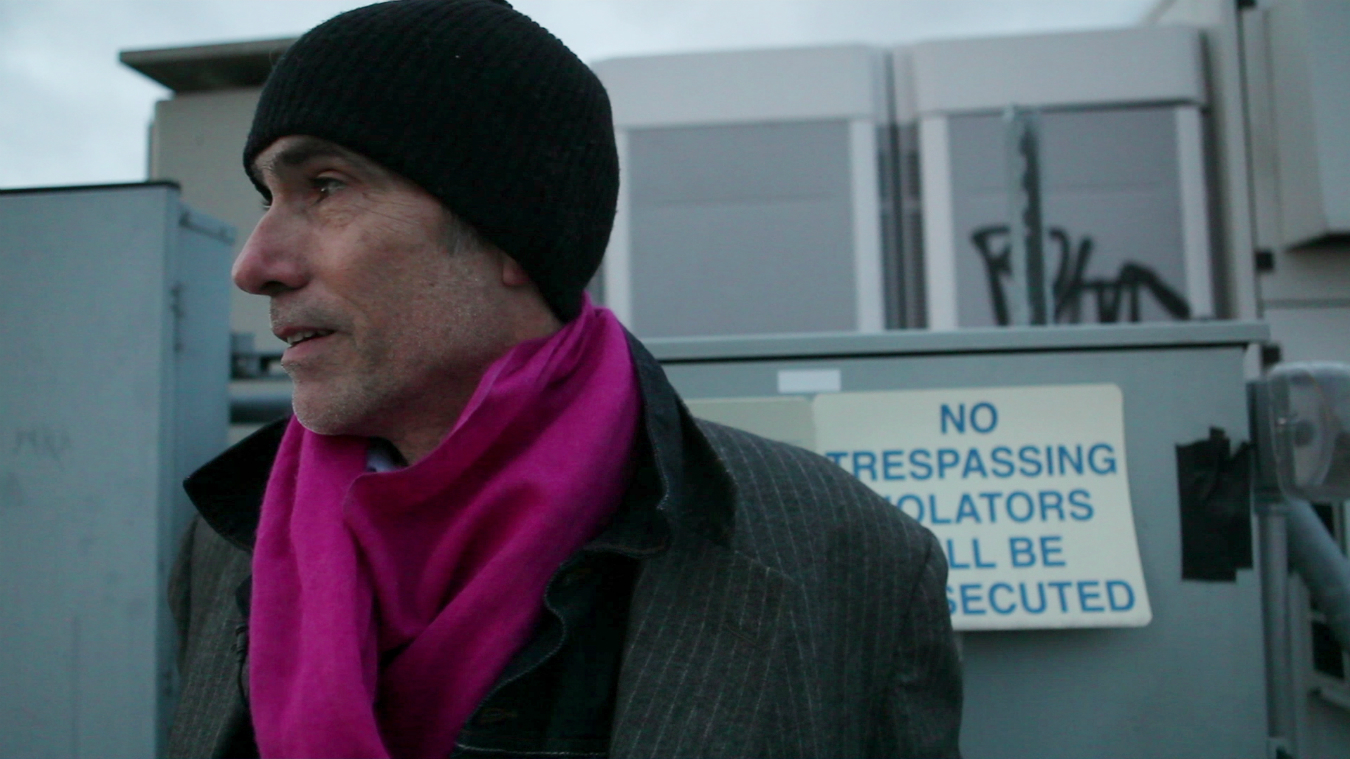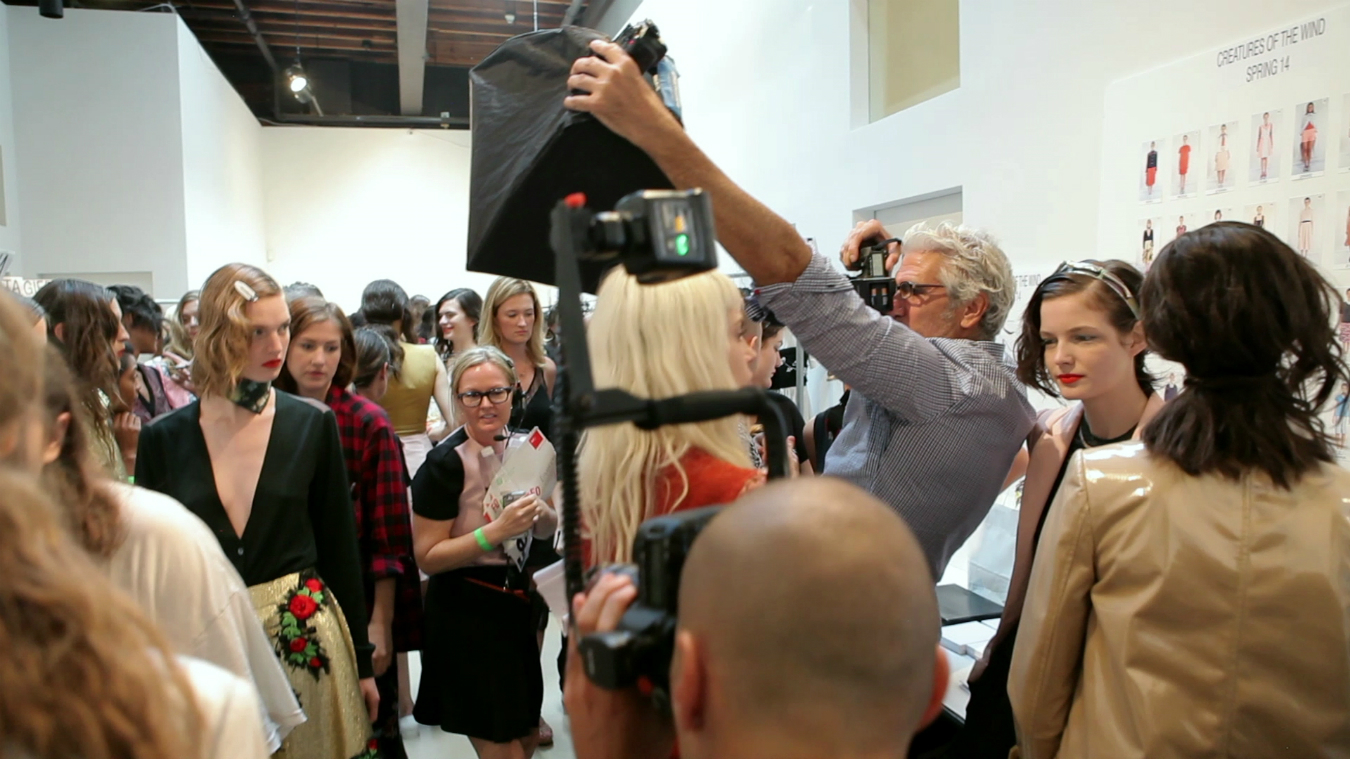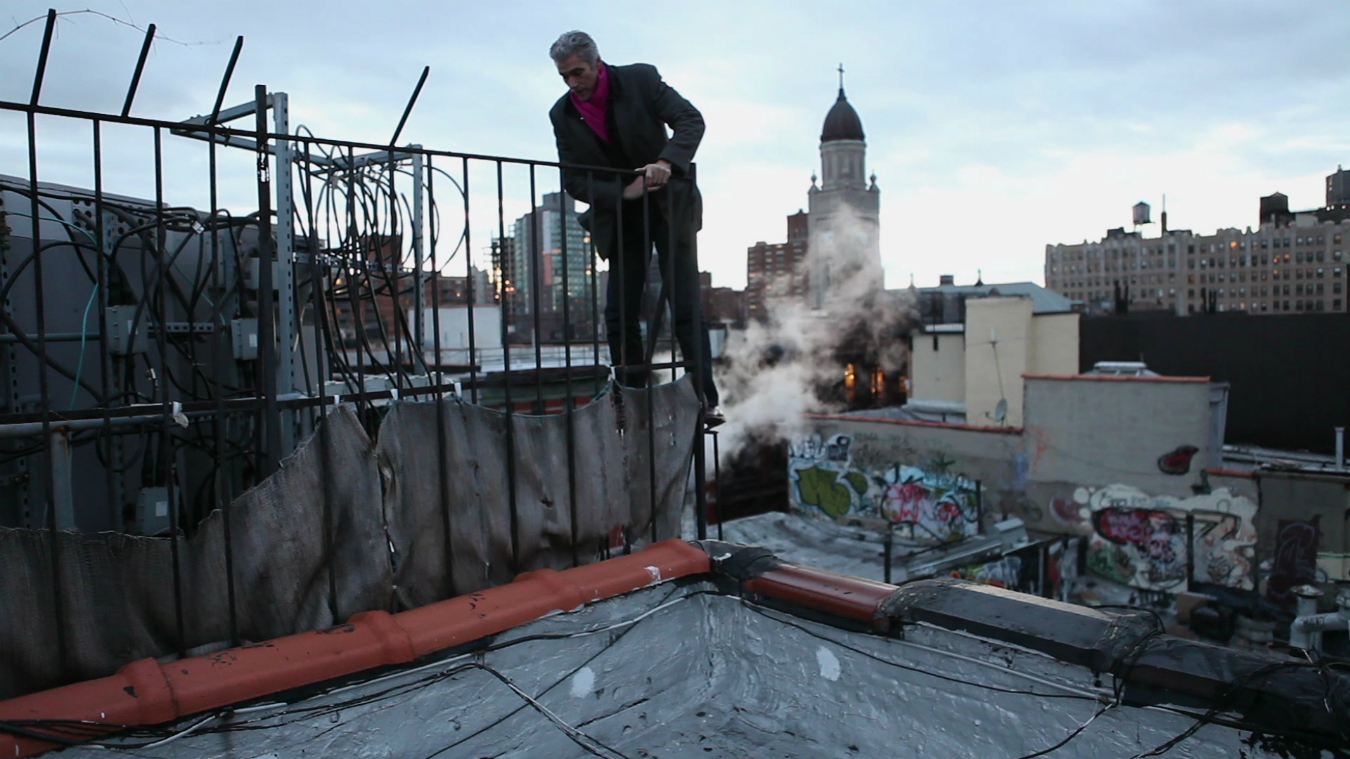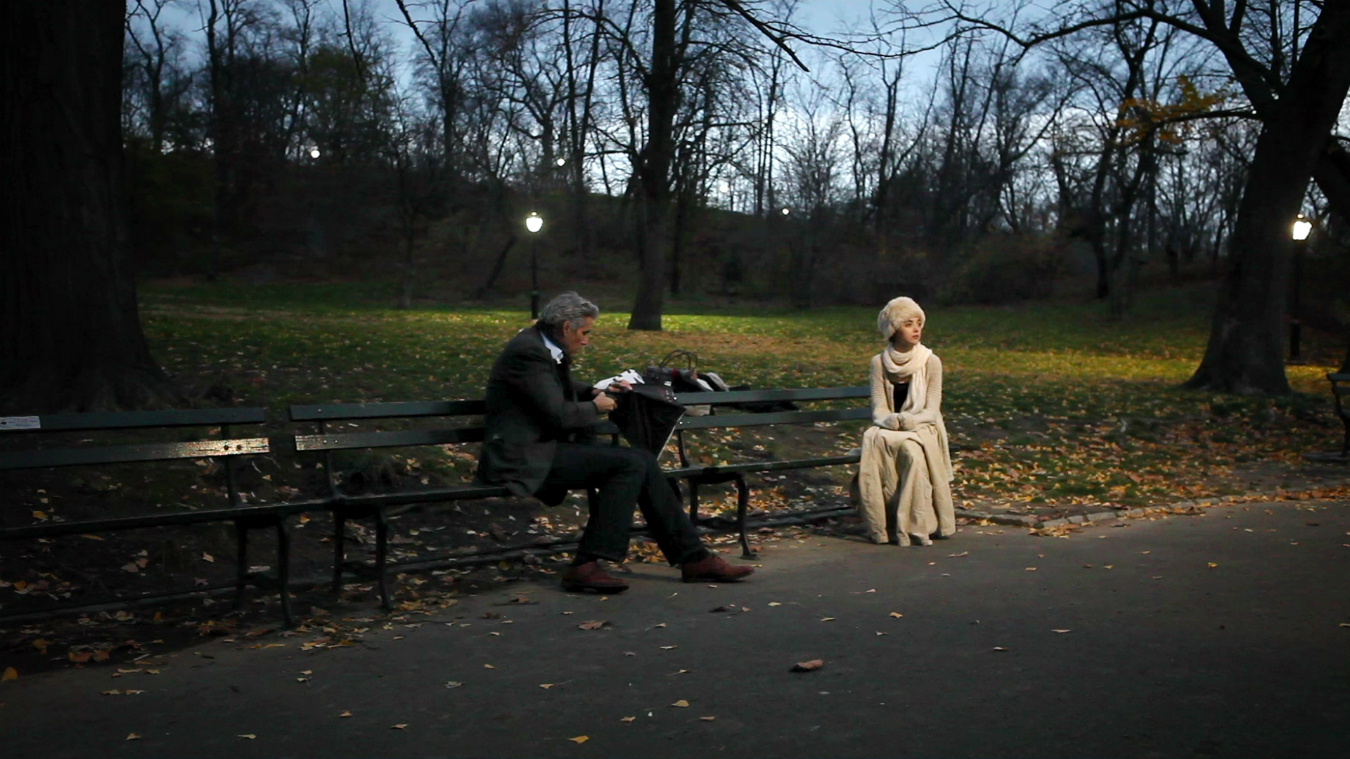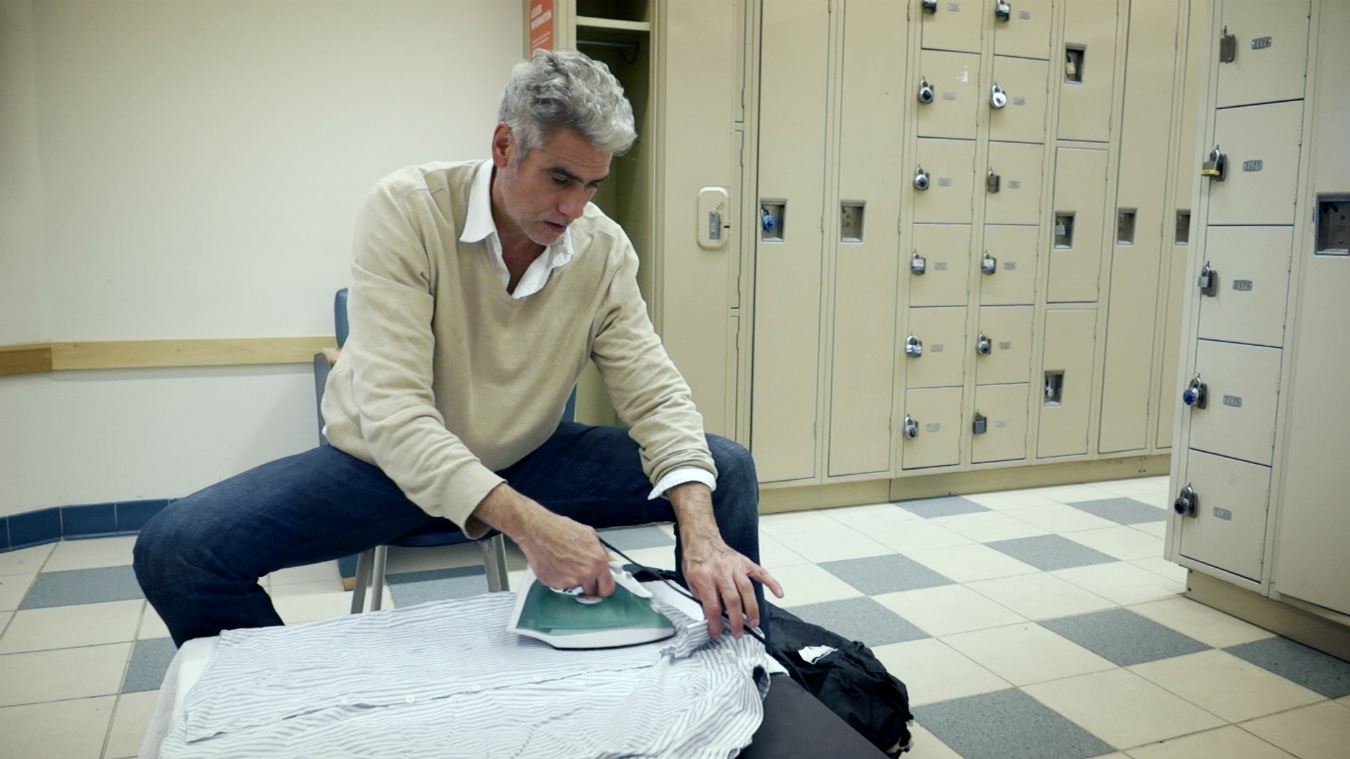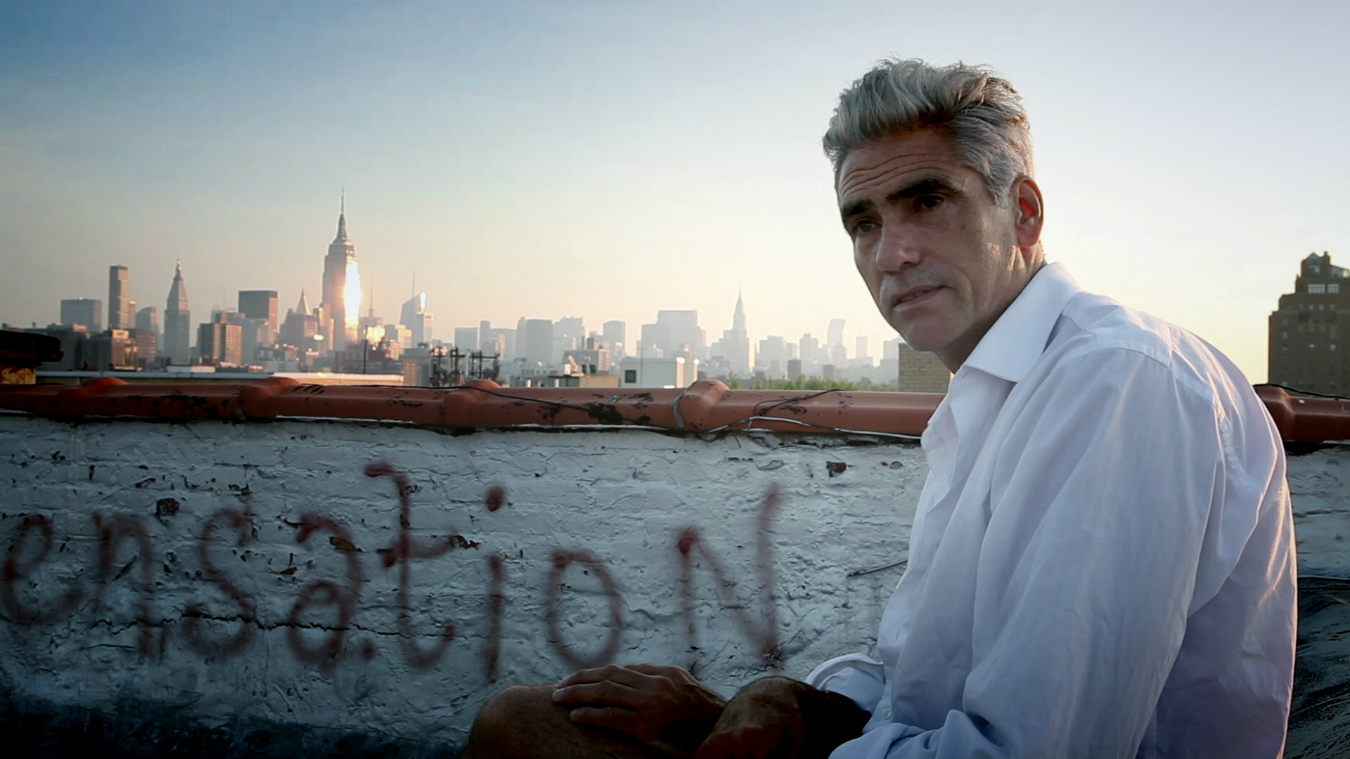Mark Reay spent five years sleeping under a tarp on the roof of a Manhattan apartment building. The city has many people living on the street, but Reay is different—for him, homelessness was a choice.
The subject of Thomas Wirthensohn’s new documentary, Homme Less, Reay fills his days by taking photos for a handful of fashion publications, purring affectionately over models and editing photos in coffee shops. He is also an actor who occasionally lands walk-on roles for film and television, referring to himself as a piece of human “furniture” while letting his outwardly positive presentation slip for a moment. What makes Homme Less so intriguing, though, is the fact that Reay sneaked onto the rooftop of a friend’s apartment each night while presenting himself as a glamorous individual during the day. Reay’s ability to participate in the shiny world of high fashion while discreetly coordinating a vagabond reality can be taken as evidence for his acting ability.
What makes Reay’s efforts so intriguing is the fact that he thought of himself more as an “urban camper” than a marginalized victim of extortionate rent and lack of resources in Manhattan. “I’m not homeless, I just don’t have a place to stay right now,” he says in the film. “I don’t have a roof over my head, but I have this place to sleep.” Reay credits his manicured look and relative mental clarity with preventing anyone from questioning his existence when sneaking in and out of his friend’s apartment building. “I didn’t even consider myself homeless, being college educated—I’d had jobs in the past,” explains Reay, speaking on the phone from Los Angeles to attend the presentation of Homme Less as the Hollywood Film Festival. “I thought it was just an odd moment in my life—not tying it into any greater social or economic situation.” While living on the roof, Reay stored most of his belongings in a row of gym lockers (the same gym where he often showered, ironed, and shaved), and hid his makeshift abode with a series of tarps, retreating to his open-air penthouse well past midnight and leaving around sunrise. His ability to seamlessly live on the fringes of the world’s most watched city is perhaps a testament to just how easy it is to slip through the cracks.
Watching the film now, it is tempting to wonder where Reay ended up. “I knew that of course living on the roof was not something I intended as a long-term solution, so I went into it knowing that [being caught] would come,” he explains. Reay now rents a shared room on the Upper West Side of Manhattan, and has been travelling frequently to attend screenings of the film. His main focus these days, though, is his acting career. “The movie has so much international interest it would be kind of foolish to drop out of acting at this point,” he says.
While Reay presents himself as confident and secure, the film also demonstrates fleeting moments of his deeper character. When discussing his mother, Reay chokes up about the possibility of her dying before he does. During another part of the film, Reay returns home to New Jersey and goes for a walk in the wooded area near his family house, divulging that he wouldn’t mind living a more simple life in the country. Reay’s family members have yet to watch the film. “We kind of gloss over it for the most part, which makes it easier on me,” he says. “I don’t think there is something in the film that I need to discuss with them—my peculiar way of handling economic difficulties and maybe a few personality issues—they didn’t notice any change to me as a person during the five years I lived up there.”
Reay says that he has received an “outpouring of empathy and wonderment” now that Homme Less has shown at several film festivals, including Doc NYC, the Montreal World Film Festival, and the Bushwick Film Festival. It will play at the Vancouver International Film Festival on Sept. 28, Oct. 4, and Oct. 7. The film was shot using just a handheld Cannon EOS 5D camera, without the assistance of a production crew. Reay calls director Wirthensohn “a one man band”, and this one-on-one filming process underscored the intimate look into the life and mind of a man who, ironically, felt more stable without traditional stability. “For me, I wasn’t a victim of economics, it was kind of a frustration in life and being lost,” Reay explains of his decision to live on the roof. “And I guess I said, ‘I’m mad as hell and I’m not going to take it anymore, so I’m just going to give in for a while.’ And once I accepted that things weren’t working out that well for me, I actually became a little more calmer in life and a little more peaceful. It wasn’t really a recipe for success, but it was a recipe for survival—personal mental survival.” It was not without its struggles, though, including the strain it put on his love life. Beneath the boyish giggles and chiseled charm is a man infatuated with women, and the documentary chronicles Reay’s various attempts at receiving female affection, whether they be on the street, at the beach, or in a bar.
What the film best presents are the pressures to offer the finest representation of oneself at all times. The weight Reay feels to appear that he has it “all” is something that he divulges often throughout the documentary. And while Reay’s story is an exception not a rule, his situation is representative of many who feel that they must offer a highly-constructed appearance in order to keep up.

